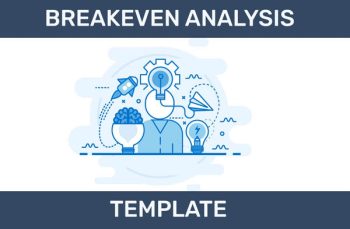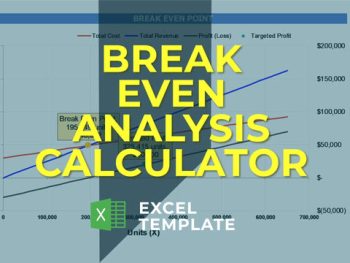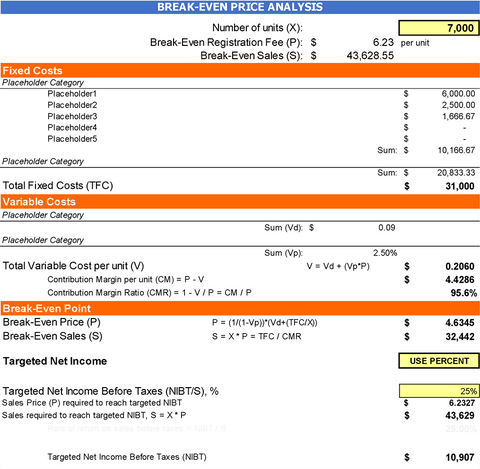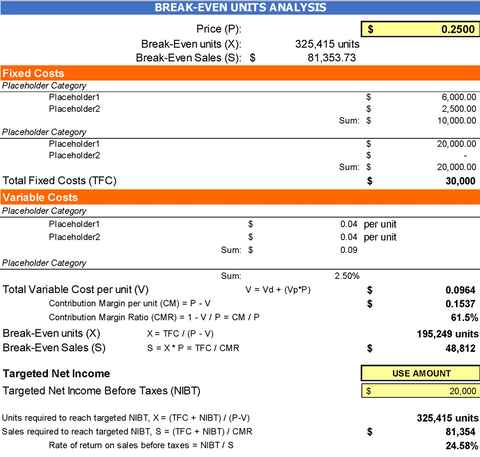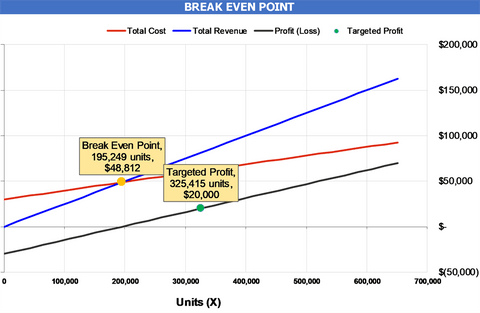- Analyzing the Costs and Benefits of Activity Based Budgeting
- Understanding Incremental Budgeting: Exploring the Basics
- Harness the Power of Financial Modeling to Improve Your Capital Budgeting
- Exploring the Complexities of Activity Based Budgeting
- Master the Benefits of the Cash Flow Cycle
After reading this article, you should be Apple to learn:
- What is break-even analysis
- Uses of break-even analysis
- Components of Break-Even Analysis
- HOW IT WORKS
- Importance of break-even analysis
- Limitations of break-even analysis
- FREQUENTLY ASKED QUESTIONS
What is break-even analysis
The main objective of the business is to make a profit. How a company will know for its product that it will cover the cost associated with producing that product or to assess whether a project or product is financial. It is the Break-even analysis that allows the company to calculate the minimum number of units to sell to cover the fixed and variable cost of the units sold.
A company uses a break-even analysis to calculate the minimum units to sell with the change in prices and demands to cover its fixed cost. It is also considered a safety margin. Generally, the business with less fixed cost will have a lower break-even point than a business with higher fixed cost. When a business breaks even, it starts making money, anything below the obvious is a sign of loss.
Download Profitability Analysis Excel Template in Excel
Uses of Break-Even Analysis
The break-even analysis technique is used when making management decisions in a business. Here are some of the scenarios where the management uses the technique to decide:
- At a given capacity of a business, what will be its projected profit or loss?
- What is this minimum level of capacity utilization that will avoid the total loss or cost?
- Will the new product achieve the minimum level of sales to cover its associated costs?
- Helps decide whether to continue production of a product or stop it to maximize profit
- Enables the business to understand price triggers and its effect on business profitability.
- How the break-even point changes if the cost increases or decreases
The above list is not exhaustive as the business faces new scenarios from time to time and decision making techniques are applied accordingly. From the above scenarios, we can understand the importance of break-even analysis in the decision-making process. This tool is very important for determining a production level or deciding on a perfect product mix.
Download Excel Analysis Breakeven Template in Excel
Components of Break-Even Analysis
To understand break-even analysis, the following concepts should be clarified:
- Contribution margin is a major component of the break-even calculation. It is the difference between the selling price of a product and the variable cost of the product. If a hamburger is sold for and its variable and fixed costs are and . His contribution margin will be (variable cost of selling price). This is the contribution margin that will cover the remaining fixed cost of .
- Fixed costs is a cost that does not go with the volume of production. It is also known as overhead and is charged to the business as incurred. Some examples of fixed costs are rent, salaries, taxes, etc.
- Variable cost is the cost that fluctuates with the change in production volume. It is the directly attributable cost of items used in the production of a product. In a restaurant, the cost of rolls, ketch-up, cheese, vegetables, packaging boxes, etc. are examples of variable costs. The units of sale and the variable costs are directly proportional and the more the restaurant sells its product, the more the variable cost will be.
HOW IT WORKS
This tool is mainly used by business managers and simply used by other stakeholders because metrics and calculations are closely associated with business management. This is a calculation of a breakeven point. Cost point and intersection revenue is calculated by dividing the total fixed cost by the selling price per unit minus the variable cost of production (also known as contribution margin).
Break-even analysis works with the level of fixed cost versus profit earned by each individual unit produced and sold. As already discussed, the lower the fixed cost, the lower the break-even point. If the firm has no fixed cost, then its break-even point will be exceeded by producing a single unit assuming that its variable cost does not exceed its selling price.
Investors are not interested in the production break-even point, rather they use break-even analysis to find the break-even point on a trade or investment. Calculating the break-even point is useful in trading options or buying fixed security deposits.
Explain the concept of Breakeven with an example of a hamburger sold by ABC Restaurant. The sale price of the hamburger is , while the variable cost which includes the bun, cheese, vegetables, meat, etc. The cost of a hamburger is produced in a restaurant and the total fixed cost is ,000.
|
# |
Description |
Calculation |
|
1. |
Contribution Margin (CM) |
Sale price – variable price = – = |
|
2. |
Event (units) |
Fixed cost ÷ cm = ,000 ÷ = 200 burgers |
|
3. |
Breakeven point (sales) |
Sale price x Equilibrium (units) = 0 x = ,000 |
IMPORTANT NOTE: A break-even analysis is an essential part of any financial projection in the business plan for a startup. We have designed Free Break-Even Analysis Excel Template In Excel / Google Sheet. The current break-even analysis model is a ready-to-use model to calculate the financial feasibility to launch a new product or start a new business. You just need to include the numbers from the yellow cells and see the breakpoints with a graphical presentation.
Download Excel Analysis Breakeven Template in Excel
Importance of break-even analysis
Break-even analysis is important for a business in performing various management tasks. Business owners can determine the impact of cost, selling price and quantity produced on its profitability.
Some of the key usages of break even point are mentioned below:
- Target Cost: The tool helps business leaders make decisions related to target costs. The Breakeven Analysis Project cost increase or decrease in the form of profit or loss. Management can easily calculate the impact of the fixed cost increase on their profits from the break-even analysis.
- Budgeting: Break-even analysis can project future earnings which can be used to produce the budget for the upcoming month, quarter or year.
- Margin of Safety: It is the difference between the break-even point and the actual units sold or you can say it is the breakeven sale amount and the actual sales made. This tool can help identify that, at which point sales are unable to be profitable so that management can take timely action to avoid the loss.
- Avoiding Risk : Every business idea or product is unprofitable, and that meant being scrapped. Break-even analysis can help avoid risk by not pursuing investments or product lines that are not likely to be profitable.
Limitations of break-even analysis
Break-even analysis is based on assumptions and estimates. There are certain assumptions that are unrealistic and ideal. These assumptions are the limitations of the break-even analysis.
Some of them are listed below:
- The price of the product may not be the same at different levels of production, because the fixed cost may increase with the increase in the level of production.
- The goods produced and sold cannot be the same. There may be accumulation actions or there may be a wastage percentage in the production process.
- The variable cost per units can also change as if a company buys more raw materials and due to buying in bulk it will reduce the variable cost. Thus, the break-even analysis may not be calculated correctly.
- It assumes that a firm’s product mix is constant which in reality is not.
Adding to the above limitations due to assumption, Breakeven Analysis is based on cost analysis only and does not take into account the sales factor and the impact of variations in sales volume or product price. .
FREQUENTLY ASKED QUESTIONS
Q. What is the contribution margin percentage?
Q. Can investors benefit from a break-even analysis?
Q. Can break-even analysis help the decision-making process?
[right_ad_blog]

